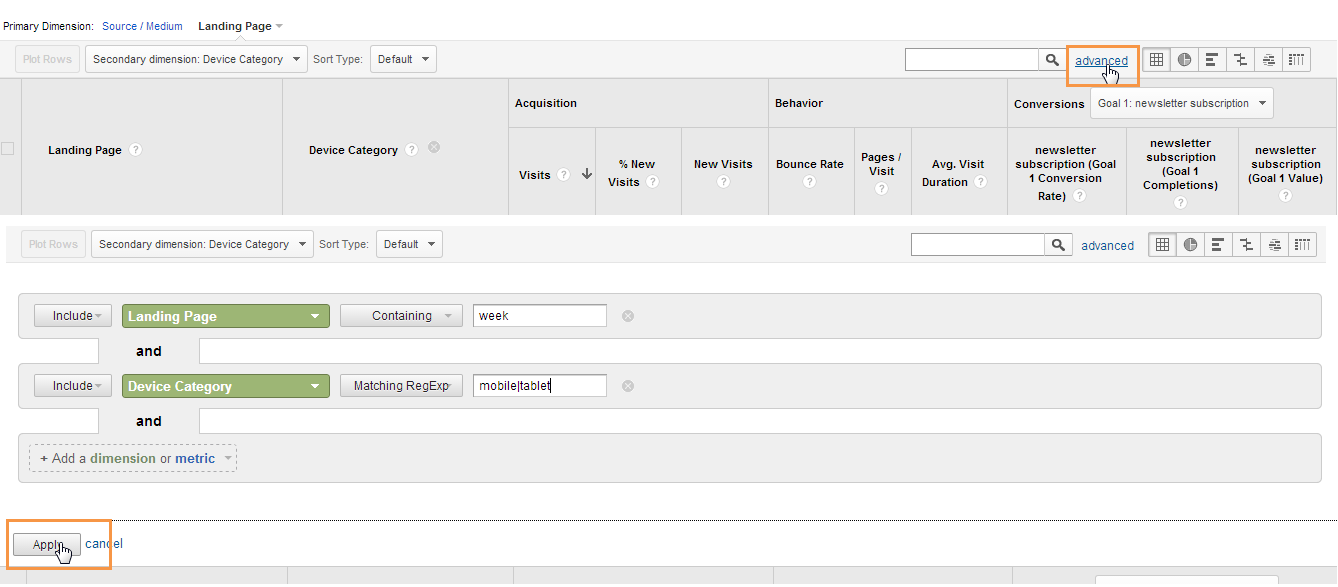Improving Data Precision: Google Analytics Secondary Dimension Insights
Improving Data Precision: Google Analytics Secondary Dimension Insights
Blog Article
Unlocking the Power of Second Dimension Analytics for Boosted Data Insights and Decision-Making
In the realm of data analytics, primary measurements often take the limelight, yet the true deepness of insights lies within the world of second measurements. By using the power of second measurement analytics, organizations can unveil hidden trends, reveal relationships, and essence much more significant conclusions from their information.
Relevance of Additional Dimensions
Exploring the value of second dimensions in analytics unveils the hidden layers of information insights essential for informed decision-making in numerous domains. Secondary measurements supply a deeper understanding of key data by offering added context and point of views. By incorporating second dimensions right into analytics, companies can extract extra nuanced and detailed understandings from their datasets.
One secret significance of second dimensions is their capacity to section and categorize primary data, permitting a much more detailed evaluation of particular parts within a dataset. This segmentation makes it possible for companies to recognize patterns, trends, and outliers that could not appear when considering the data in its entirety. Second dimensions help in discovering relationships and dependencies between different variables, leading to even more exact projecting and predictive modeling - secondary dimension.
Additionally, additional measurements play a crucial function in improving information visualization and coverage. By including second dimensions to visualizations, such as charts or graphs, analysts can produce a lot more insightful and useful representations of data, assisting in far better interaction of searchings for to stakeholders. On the whole, the assimilation of second measurements in analytics is instrumental in unlocking the complete possibility of information and driving evidence-based decision-making.
Trick Advantages of Making Use Of Additional Dimensions
Making use of additional dimensions in analytics supplies organizations a strategic benefit by increasing the depth and granularity of information insights. By studying data making use of additional dimensions such as time, place, device kind, or user demographics, companies can discover patterns, fads, and connections that might otherwise continue to be concealed.
Furthermore, the use of second dimensions enhances the context in which main information is analyzed. By leveraging second dimensions in analytics, organizations can harness the full capacity of their data to drive much better decision-making and attain their organization objectives.
Advanced Data Analysis Techniques
A deep study innovative information evaluation strategies discloses sophisticated methods for extracting important insights from complicated datasets. One such method is artificial intelligence, where formulas are utilized to determine patterns within information, anticipate results, and make data-driven decisions. This technique permits the automation of analytical model building, enabling the handling of huge quantities of information at a quicker speed than conventional methods.
Another advanced strategy is anticipating analytics, which utilizes statistical algorithms and machine learning methods to anticipate future end results based on historical information. By assessing fads and patterns, companies can anticipate consumer habits, market patterns, and potential threats, equipping them to make positive decisions.
In addition, text mining and sentiment evaluation are useful techniques for extracting understandings from unstructured information resources such as social media remarks, client reviews, and study reactions. By analyzing message information, companies can comprehend customer point of views, determine emerging fads, and enhance their solutions or products based on responses.
Enhancing Decision-Making Through Secondary Measurements

Enhancing decision-making via secondary dimensions makes it possible for companies to make even more educated see and targeted tactical selections. As an example, by segmenting client information based upon secondary dimensions like buying background or engagement levels, business can customize their marketing techniques to certain target market segments, resulting in enhanced conversion prices and consumer satisfaction. Additionally, additional measurements can assist determine relationships and partnerships in between various variables, allowing companies to make data-driven choices that drive growth and success.
Executing Secondary Measurement Analytics
When integrating secondary dimensions in analytics, companies can unlock much deeper insights that drive strategic decision-making and improve overall efficiency. This entails recognizing the certain inquiries the anchor organization looks for to answer and the information points called for to address them.

In addition, companies ought to leverage advanced analytics devices and innovations to simplify the process of integrating second dimensions. These devices can automate information processing, analysis, and visualization, permitting companies to concentrate on analyzing insights as opposed to hands-on information manipulation.
Final Thought
To conclude, secondary dimension analytics play a critical role in improving information understandings and decision-making procedures. By utilizing sophisticated information evaluation techniques and executing additional measurements properly, organizations can unlock the power of their data to drive calculated service choices. The key benefits of utilizing secondary dimensions can not be overemphasized, as they provide a much deeper understanding of information fads and his response partnerships. It is essential for organizations to leverage secondary dimension analytics to stay competitive in today's data-driven landscape.
In the realm of data analytics, primary measurements usually take the limelight, however the true depth of understandings exists within the realm of secondary dimensions.Making use of additional dimensions in analytics provides organizations a critical benefit by enhancing the depth and granularity of information understandings. By leveraging secondary measurements in analytics, companies can harness the full potential of their information to drive much better decision-making and achieve their business purposes.
Executing data recognition processes and normal audits can assist maintain information high quality and reliability.
By making use of sophisticated information evaluation strategies and carrying out secondary measurements efficiently, companies can unlock the power of their information to drive calculated business choices.
Report this page